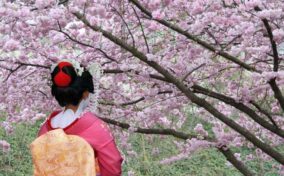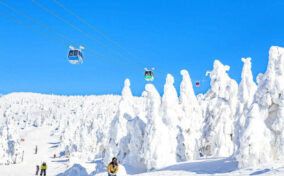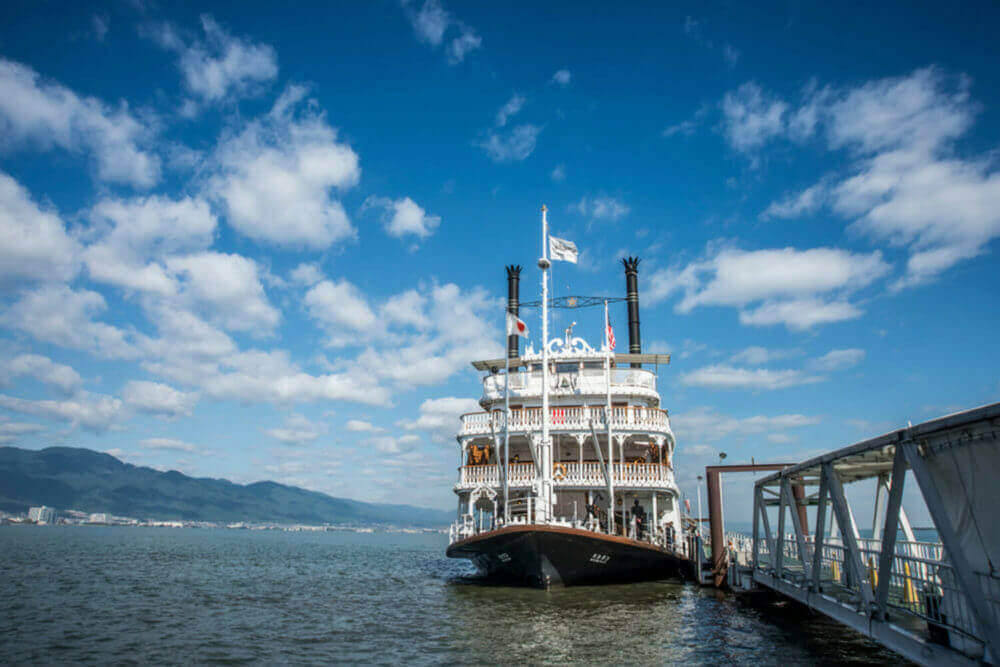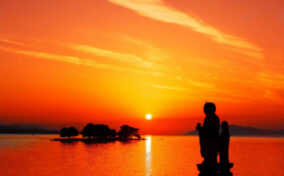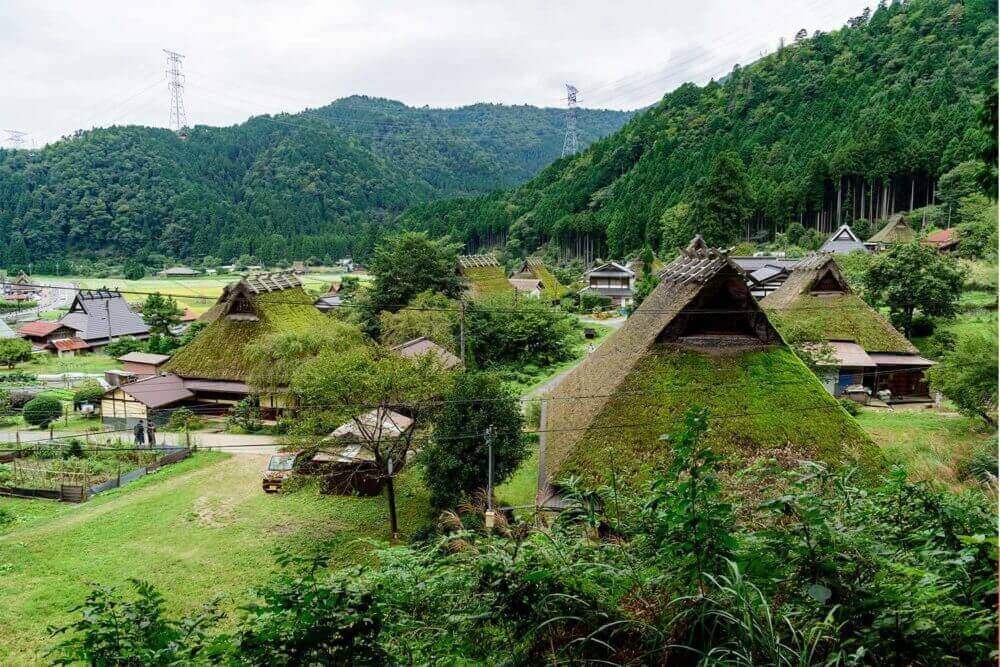If you take the train from Kyoto Station to Nara City, you will be amazed at how quiet the old world still remains. Furthermore, if you go to Ikaruga, you will be able to experience Japan from an even older era. I like Nara better than Kyoto. Because Nara feels more old Japan than Kyoto. Nara Prefecture invites you to an older and deeper Japan.
On this page, we will introduce the top 5 must-see attractions in Nara.
Table of Contents
Outline of Nara
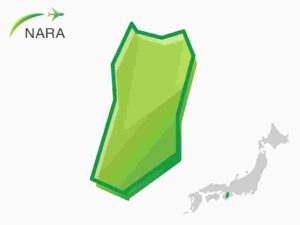
Map of Nara
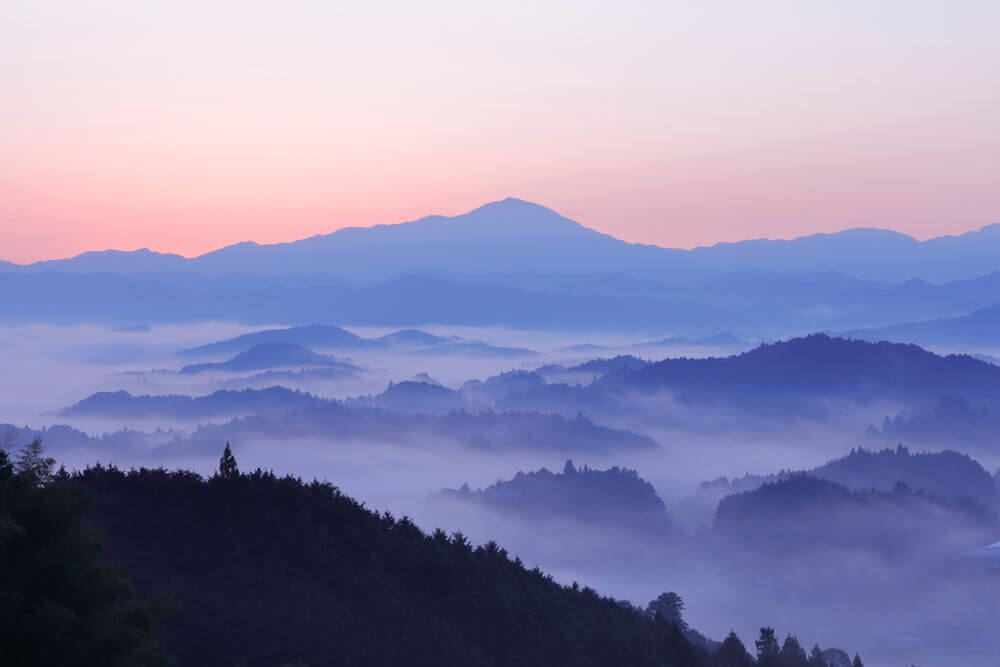
Blue mountains silhouettes in sunrise. Foggy blue dreamy landscape. Ouda, Nara, japan = Shutterstock
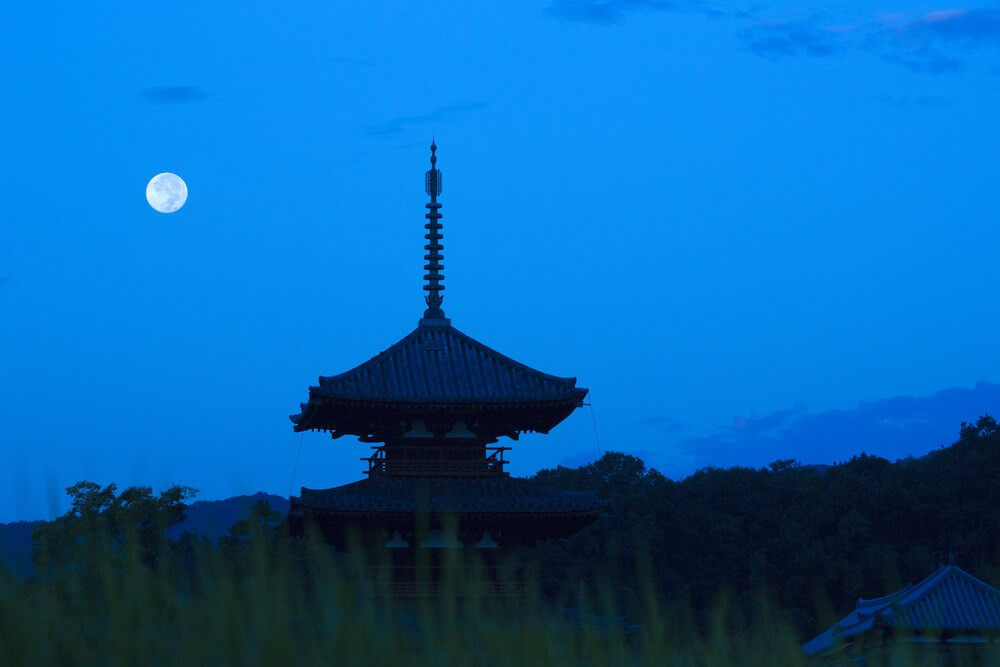
Night in Ikaruga, Nara Prefecture. The contrast between the temple tower of Toukiji Temple and the moon is beautiful = Shutterstock
Nara prefecture is located in the southern part of Kyoto. There is the Nara Basin in the northwestern part, but most of the other regions are Mountains.
The center of the Nara Basin is Nara City. Nara is the place where was the capital of Japan before Kyoto. Nara is a quiet city rich in nature. Here are many amazing temples and shrines that are comparable to Kyoto.
In the southern part of Nara prefecture there are vast mountains and plateaus spreading. Among them, there is a forest area called Yoshino mountain area. There is Mt. Yoshino, which is very famous as a cherry blossom spot here.
Access
Although Nara prefecture is located in the center of Japan, transportation networks are not being developed surprisingly.
Airport
There are no airports in Nara prefecture. If you want to go to Nara prefecture by plane, you will use Kansai Airport in southern Osaka or Itami Airport in northern Osaka.
It takes about 1 hour and 40 minutes by direct bus from Kansai Airport to Nara city. If you use a train, you will first go to Namba station in Osaka by Nankai Railway. Next, you will go from Kintetsu Osaka Namba Station to Kintetsu Nara Station by Kintetsu Railway. The journey takes approximately 1 hour and 40 minutes.
Railway
There is no Shinkansen station in Nara prefecture. So you need to use JR Train or Kintetsu Railway from JR Kyoto Station. If you use limited express from Kintetsu Kyoto station, it takes 35 minutes to Kintetsu Nara station.
>>There are discount passes for visiting sightseeing spots in Nara, so please check here.
There are many sightseeing spots in Nara prefecture that are high level representative of the whole country. For this reason, I have already introduced many of them among other articles. Since I want to avoid writing the same thing, please forgive me that there are many links to those articles.
Todaiji Temple
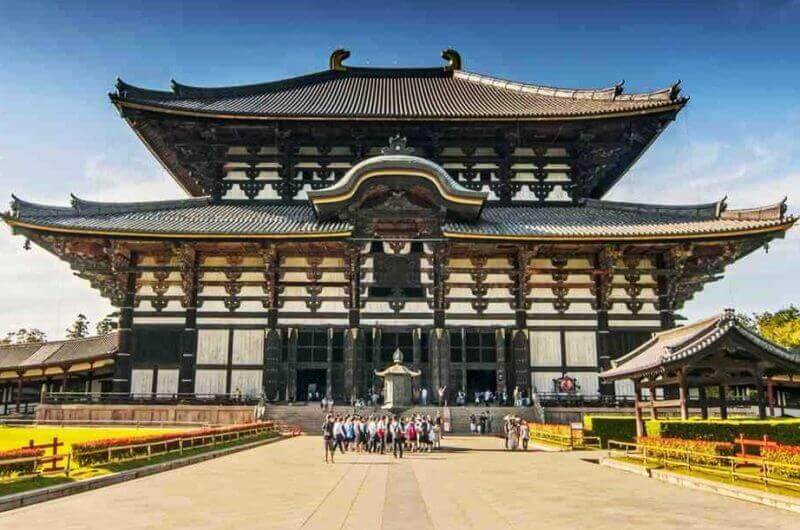
Todaiji Temple is a Buddhist temple complex, that was once one of the powerful Seven Great Temples, located in the city of Nara, Japan = shutterstock
Many of the tourists in Nara walk from Nara Station to Todaiji Temple. Then They play with deer at nearby Nara Park and visit Kasugataisha Shrine.
Todaiji is a great temple that represents Japan together with the Kinkakuji and Kiyomizu Temple in Kyoto. In this temple, as you can see in the picture on the top of this page, a Great Buddha is settled. If you go to Todaiji, you will be amazed at the size of the wooden building that protects the Great Buddha first. And you will be overwhelmed by the power of the great Buddha.
Todaiji was built in the first half of the 8th century when the capital was in Nara. After that, many wooden buildings were destroyed by fire several times, but they were rebuilt each time. The main building currently being built was rebuilt in the 17th century.
>> For details of Todaiji, please see this article
Nara Park

Nara Park is home to many deer = AdobeStock
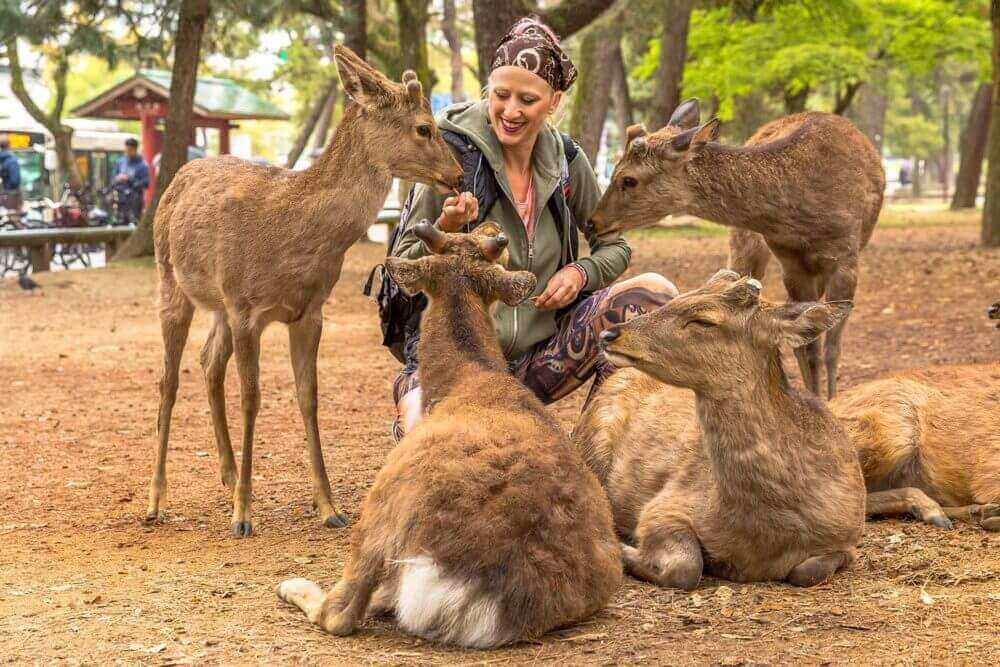
Young woman petting four deer in Nara park of Japan. Wild deer are considered a natural monument = shutterstock
In the middle of Nara city, the famous Nara Park is spreading. There are about 1,200 deer in this park.
Deer coexists with humans. The deer in this park does not fear humans. If you go to this park, deer will come closer to you.
In Nara Park, baits that deer eats are sold. You can feed the deer. If you buy bait, nearby deer will come to you. The deer is well behaved, so please try bowing at the deer by all means, making for a unique and unforgettable experience.
>>Click here if you want to know the overview of Nara Park and the tour menu etc.
Kasugataisha Shrine
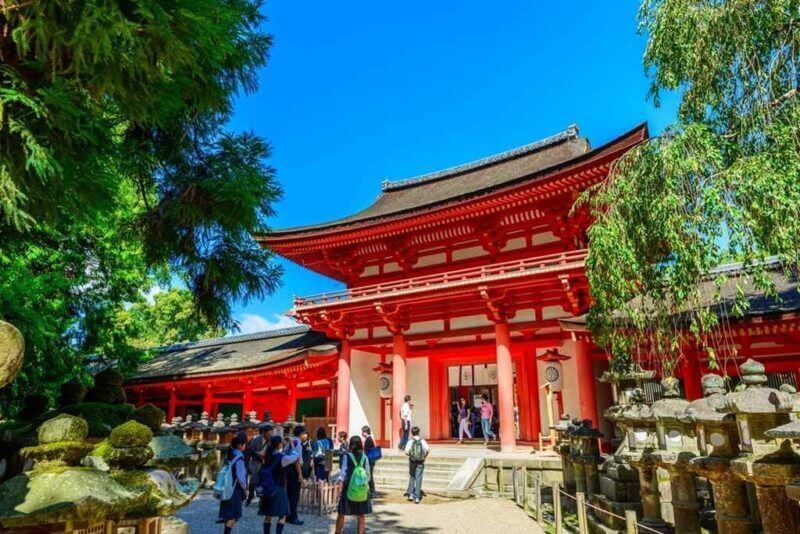
Kasugataisha Shrine is Shinto shrine in the city of Nara, Japan = shutterstock
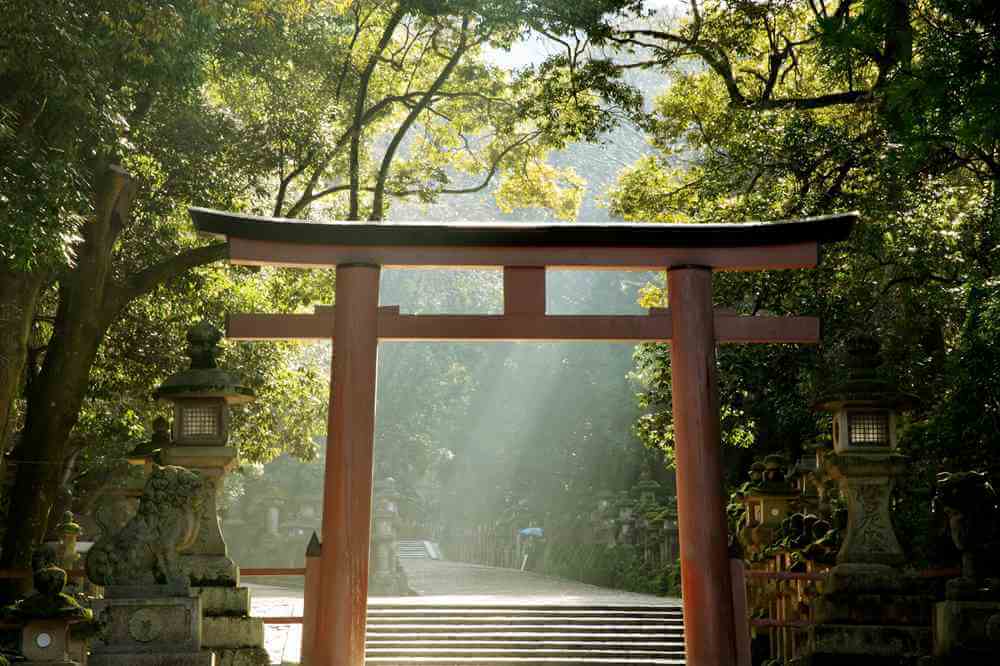
The second torii in Kasuga Taisha in early morning, Nara, Japan = Adobe Stock
Kasuga Taisha is a large shrine located in the depths of Nara Park. This historic shrine is famous for the thousands of lanterns that line the approach leading to the main shrine. Founded in the 8th century.
At Kasuga Taisha, deer are considered messengers of the gods, and in Nara, deer are treasured. There are many deer beside the stone lanterns around Kasuga Taisha. This area has a solemn atmosphere.
>> Please see this article for details of Kasugataisha Shrine
Horyuji Temple
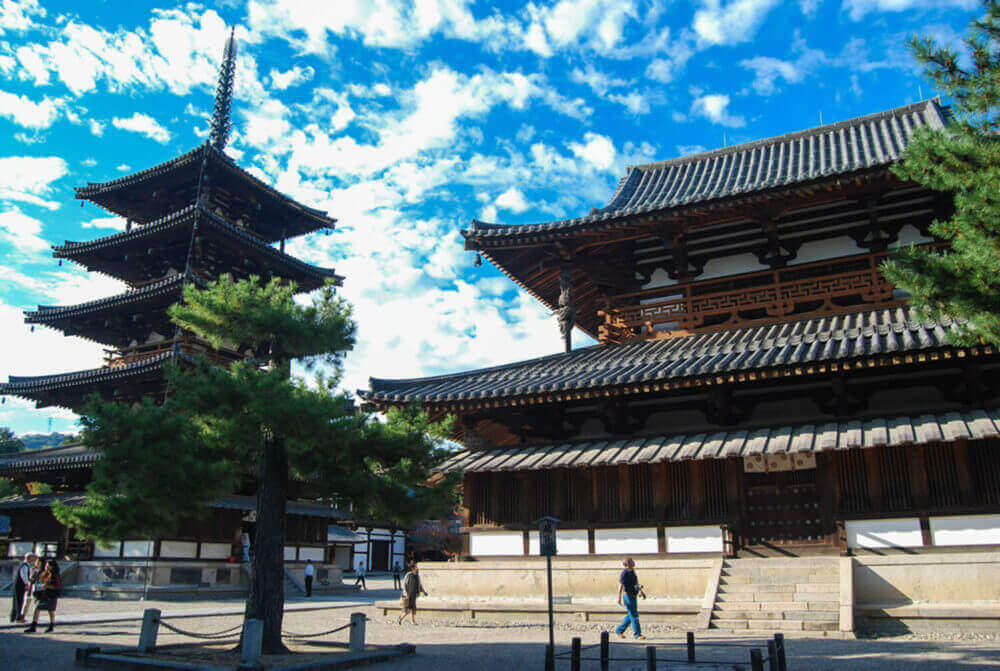
Listed as a World Heritage, Horyuji is a Buddhist temple and its pagoda is one of the oldest wooden buildings exist = ing in the worldshutterstock
There are several famous temples around JR Nara Station. They were founded in the 8th century. If you want to see temples older than those, take the JR train to JR Horyuji Station. There is Horyu-ji Temple built in 607 AD. One of the oldest wooden buildings in the world, this ancient temple and the surrounding some of the oldest wooden buildings in the world are a must-visit for history buffs.
Buddhism was not widely practiced in Japan during this period. Therefore, Horyuji was the most avant-garde building at that time. In particular, the five-storied pagoda of this temple must have surprised Japanese people at the time.
13 minutes from JR Nara Station to JR Horyuji Station. It takes about 15 minutes on foot from Horyuji Station to Horyuji Temple.
>> For details about Horyuji, please see this article
Mt. Yoshino
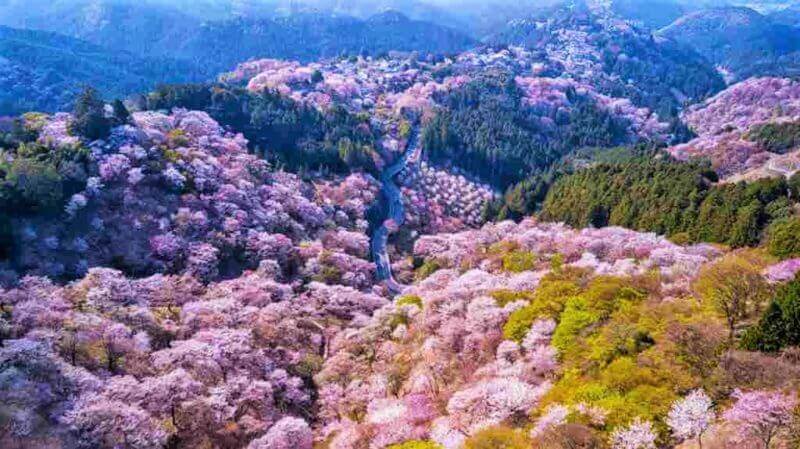
Aerial drone view of Mt. Yoshino covered by full blossom cherry trees, Nara prefecture, Japan = shutterstock
In Japan, Mount Yoshino in Nara Prefecture is famous for its cherry blossoms. It is said that since ancient times, people of the aristocracy longed for the cherry blossoms on Mt. Yoshino and set off from Kyoto.
It is said that there are 30,000 cherry trees on Mt. Yoshino. Every spring, flowers bloom one by one from the foot of the mountain. At the summit, the whole mountain becomes glamorous. There may be no other cherry blossoms like this. A must visit place in spring. Riding a small old cable car is also fun.
>> For details of Mt. Yoshino, please see this article
Thank you for reading to the end.
>>Click here for Japan tour programs that include Nara in the itinerary!
Now, let’s plan to make your vacation in Japan the best experience ever!
Back to "Best of Kansai Region"







